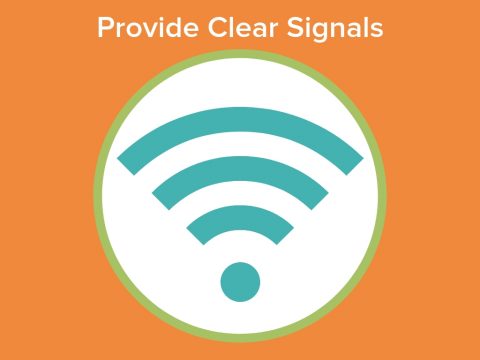A typical commercial or residential building will endure for 50 to 100 years. That means the new buildings constructed next year will continue to impact your climate goals decades from now. It makes sense to do all you can to ensure that new buildings are built to be part of the solution, rather than an additional problem.
A similar strategy applies to streets and other infrastructures. Do all you can to facilitate decisions now that make it easier to reach your climate goals later.
Publicize Your Ambitions
Once you commit to ambitious climate goals you need to publicize those ambitions. Engage business leaders and the local building community to talk about how all future construction should support the community’s climate agenda. Post information on your website and in other forums to reinforce expectations.
Begin with the end in mind…Stephen Covey
Encourage all local government committees—the teams responsible for building permits, street design and other key functions—to identify where and how they can support achieving climate goals via their processes. A design committee, for example, could talk with developers about anticipated energy usage and strategies for reducing that usage. And a transportation committee should be considering how to facilitate increased biking and walking consistent with your climate goals.
Encourage Better than Code
In Wisconsin, any new building has to meet the state building code, which includes energy efficiency requirements. The code represents the least efficient option that is currently legal to build—it is not the kind of building that will epitomize your community once you achieve your clean energy goals.
Consider strategies for encouraging stakeholders to construct buildings that are 50% or more efficient than current building code. There are a variety of cost-effective strategies for increasing the energy efficiency of buildings and these measures pay off year after year.
Also encourage stakeholders to integrate building features that make these new structures ready for future clean energy solutions. For example, all new homes and businesses should be:
- Solar electric ready if not currently solar-powered: by adding wiring now for a solar system later, installation costs are dramatically lower
- Wired for electric vehicle charging in garages and parking lots: again, it’s much cheaper to upgrade the wiring at construction versus fixing later
- Electric-only facilities where that’s feasible
There are various ways you can recognize both the builders and the buildings that meet these objectives. These efforts will give you a significant leg up on your longer term clean energy goals via a small short-term investment.
Plan for Active Transport
Just as you want future buildings to facilitate achievement of your clean energy goals, new neighborhoods and updated streets should facilitate change. That means you need more attention to active forms of transport—biking, walking, public transit.
This is a place where community input can be extremely helpful. Ask residents to share their concerns about bike and pedestrian safety. In some communities there are gaps in the bike path infrastructure, for example. These gaps make it impractical for commuting via bike. Similarly, roads without sidewalks discourage walking.
Future efforts should address existing barriers to active transport while also integrating bike lanes and sidewalks into all future projects.
And as you grow active transit, re-examine parking protocols–you might determine you need fewer parking spaces!


